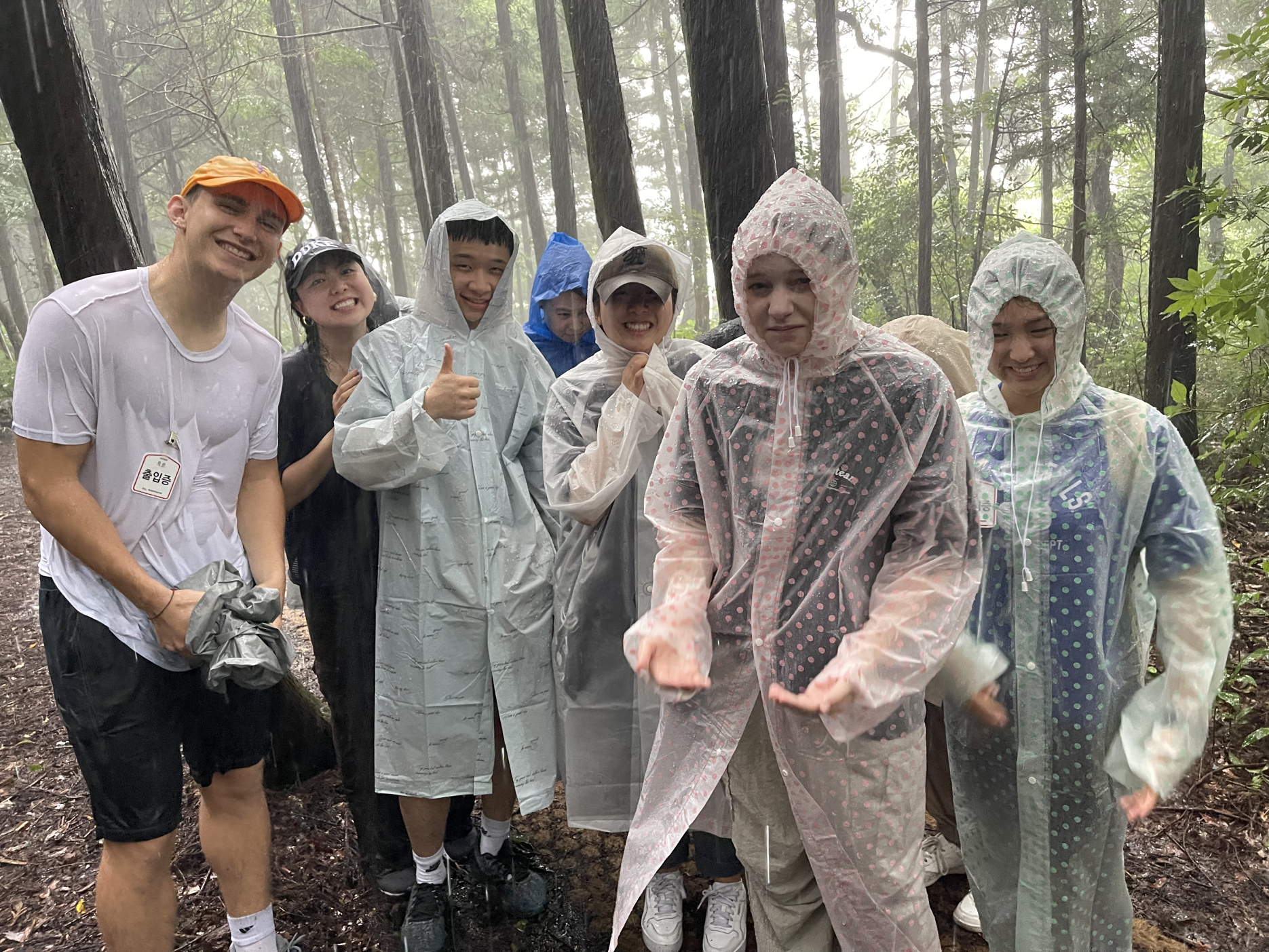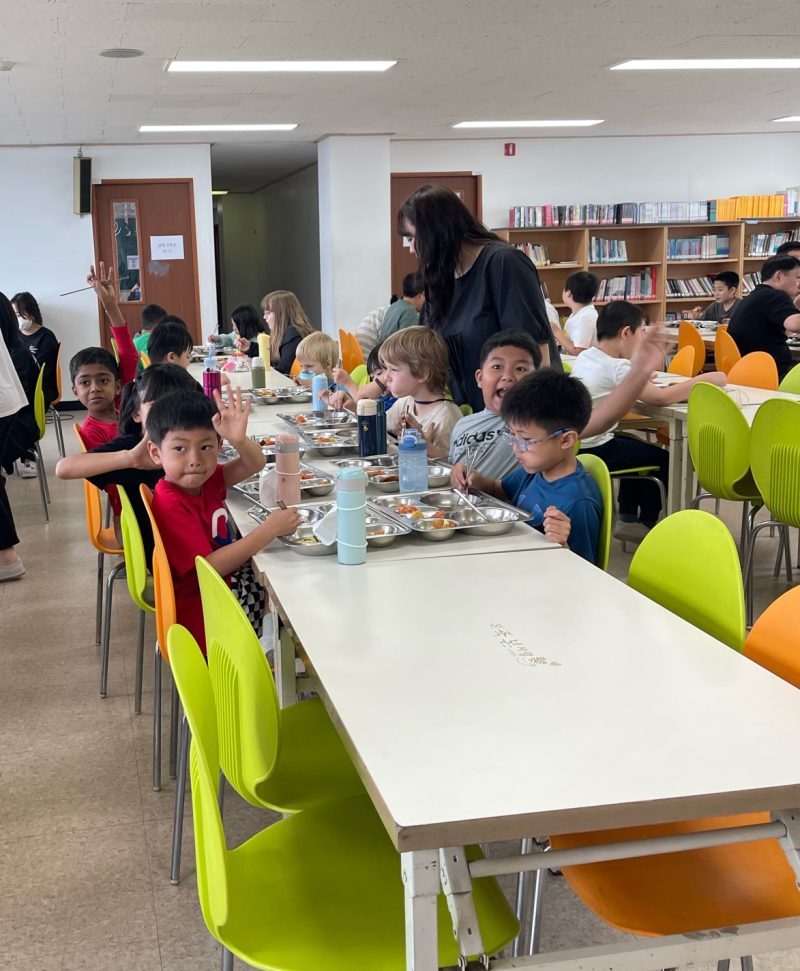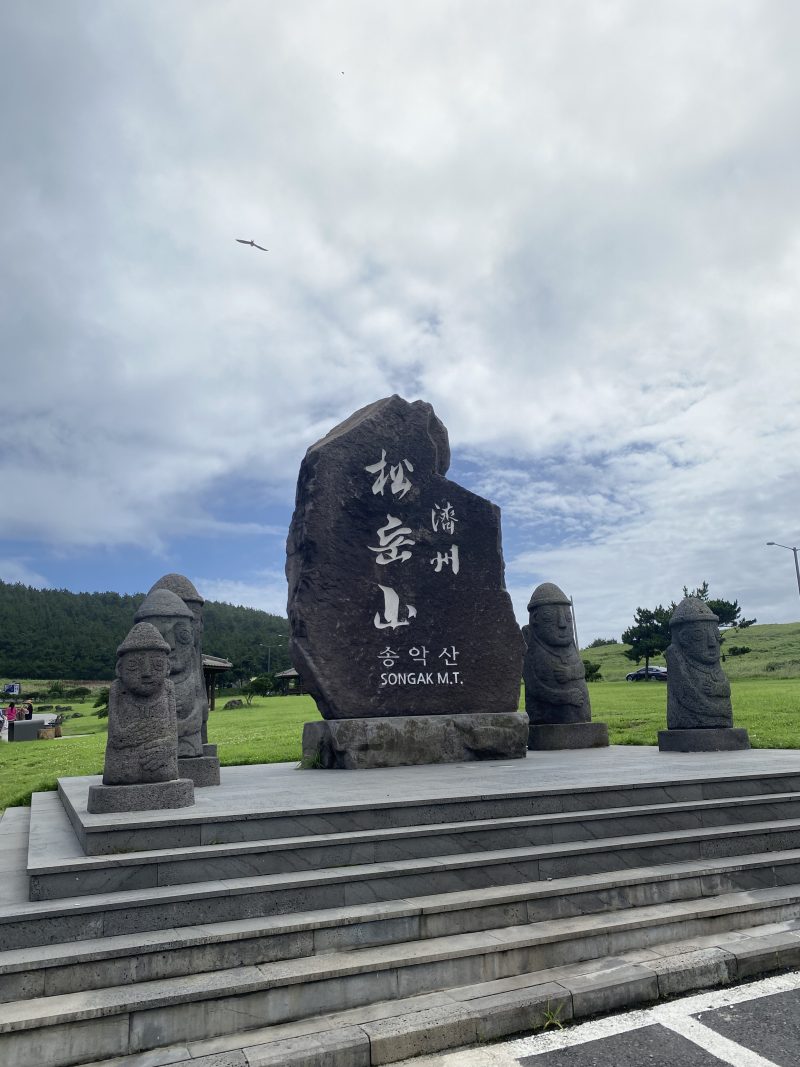To wrap up our engagement, our team went on a short trip to Jeju. Yes, Jeju Island—the perfect spot for newlyweds’, friends, and families that encompasses pristine beaches and beautiful volcanoes. All the influencers come here and collect its volcanic skincare products, matcha, and tangerines. Everything here is perfect, except for its history.
Before this trip, we had read and watched videos about the Jeju uprisings and massacres. What seemed unbelievable at first became a reality when we landed on the island.
The first day, we hiked in the pouring rain and learned about the oreums formed by volcanic eruptions. The guide who led the tour was very knowledgeable about the landscapes, but my limited Korean made it hard to grasp everything there was to be said. I still loved the beautiful scenery and feeling of puddles in my shoes. The second day is when most of the education occurred. We went to a peace center in Gangjeong village, the site of the controversial naval base. Kaya, a US citizen who has been a social activist in the village for several years, gave us a tour of the peace center and village. I was really shocked when I learned about how the base was built, as it came to fruition through the betrayal of the citizens. The people fought back, but the government did not care and proceeded to ruin the coral reef and Gureombi rock. Part of the tour included a protest. To be honest, I was very uncomfortable because even though we learned about the struggle, I still was not completely aware of all the facts. Especially since it was my first protest, I felt that going up to the military base right in front of on-duty officers was a bit too much for me. Regardless, I am grateful for the experience and that the villagers could share their stories with me. I learned a lot this day about the struggles of the local people that popular media does not reveal.
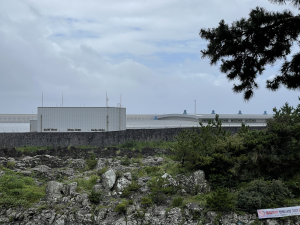
Later that day, we saw the remnants of Japanese tunnels next to the beach, further solidifying that the history of Jeju is not to be forgotten. We also visited the site of the 4.3 Massacres. This moment was very heartbreaking, as we were literally standing at the site where thousands of innocent lives were taken. We also heard the story of a survivor who told us that on that day, he had to find his brother’s bones in the pile of human remains. This story really touched me, and my heart felt incredibly heavy after coming to this historical site.
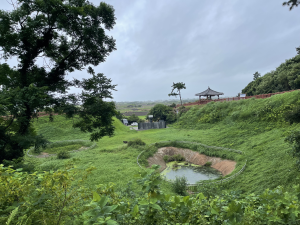
On the last day, we visited the Jeju 4.3 Peace Park and learned more about the Jeju uprisings. I really enjoyed this museum because it was a lot more foreigner friendly and easier to understand. One specific part that stood out to me was the tunnel/cave replica. To think that people hid in those small caves for a long time highlighted just how horrible the situation was. I’m really glad to have been able to learn more about the Jeju uprisings because I had no knowledge about it before coming to Korea.
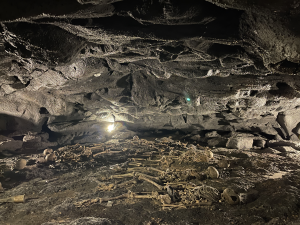
Overall, the trip to Jeju consolidated my knowledge of the 4.3 Massacres and the Korean war, as well as the daily struggles of the Gangjeong villagers. I could not have asked for a better opportunity, and I am so thankful to have gone on this trip. The beautiful Jeju island became all the more charming to me after learning about its heavy but rich history.
– Angel Huang
